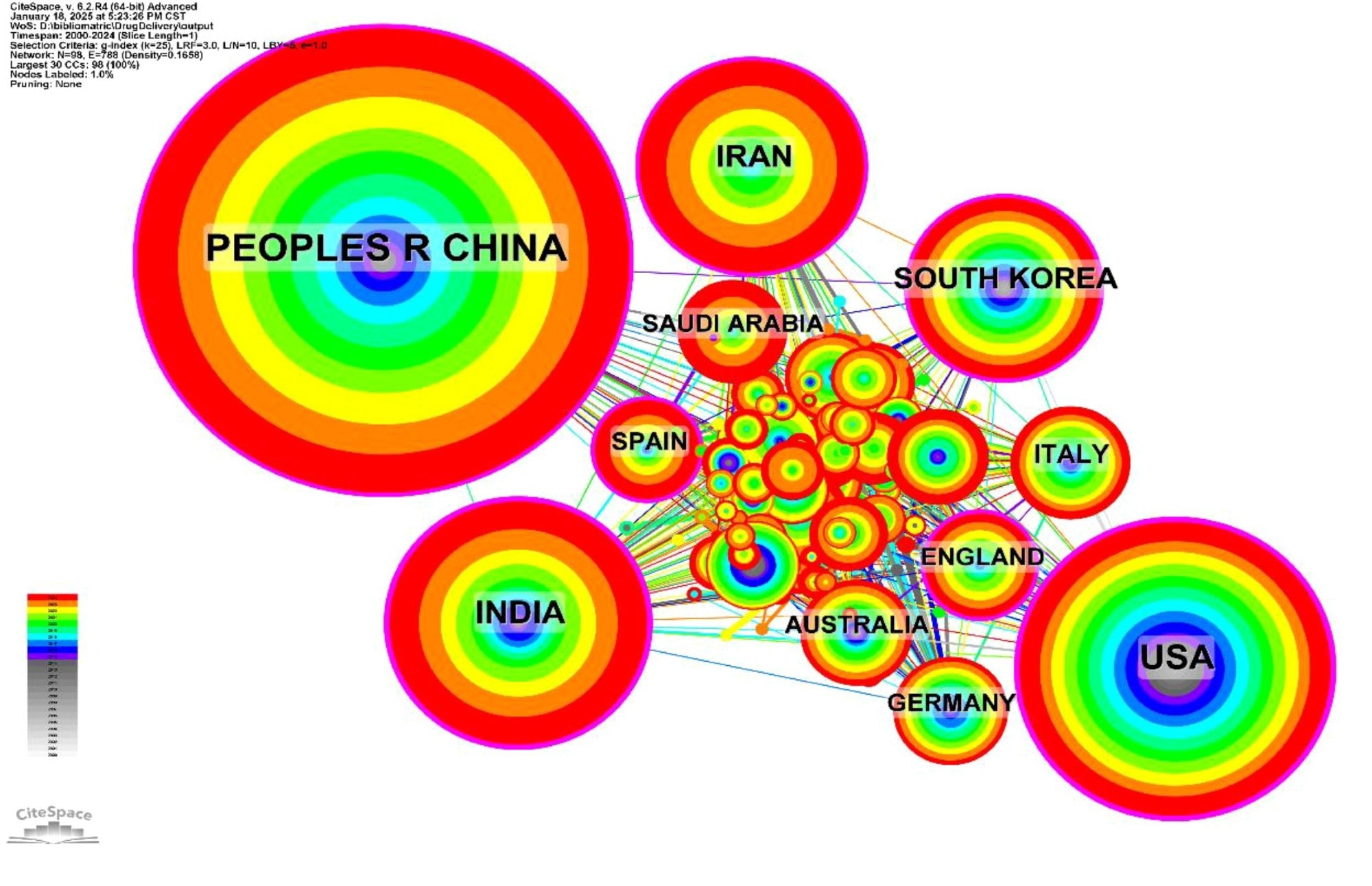Researchers unveil the global hotspots and next frontiers for hydrogel-based cancer therapies, offering new hope for more precise and less toxic treatments.
 Bibliometric Analysis: Hydrogels in cancer treatment: mapping the future of precision drug delivery. Image Credit: Gilmanshin / Shutterstock
Bibliometric Analysis: Hydrogels in cancer treatment: mapping the future of precision drug delivery. Image Credit: Gilmanshin / Shutterstock
Modern cancer therapies have resulted in higher survival rates for victims of this dread disease, in many cases. However, their generic mode of delivery and action is associated with greater adverse effects and potentially lower efficacy.
A recent bibliometric analysis published in the journal Frontiers in Immunology examined global research trends and prospects for the introduction of hydrogels in cancer treatment, a step that could lead to the future development of personalized, more effective, and less toxic cancer drug delivery platforms.
Introduction
Cancer treatments include surgery, radiation therapy, chemotherapy, and traditional Chinese medicine. Chemotherapy is very commonly used to increase the survival time, but is associated with a range of serious adverse effects. Usually, these arise because of the off-target effects of these highly cytotoxic molecules.
Targeted drug delivery is the holy grail of cancer therapy. Newer systems are envisioned that will direct drugs to act solely on cancer cells, mediated by cell- or tumor-specific recognition mechanisms.
Nanomolecules are one such promising avenue, where nanocarriers are used to transport small-molecule cytotoxic drugs to specific cells, improving their efficiency. For instance, a pH-sensitive nanosystem releases the drug in the acidic microenvironment of the tumor.
These drug delivery systems also cross biological barriers to reach intracellular targets, in addition to ensuring a more even distribution of the drug within the tumor, thereby enhancing treatment outcomes.
Hydrogels are another fruitful area of research in this field.
What are hydrogels?
Hydrogels are hydrophilic polymers, synthetic or natural, with a three-dimensional network structure that can harbor water and drug molecules. Hydrogels can also be combined with metal-organic frameworks to form composite materials with stimulus-responsive and dynamic structural properties, facilitating localized and sustained drug release.
With these properties, hydrogels have enormous potential as effective carriers for localized and sustained drug delivery to cancers. Their semisolid nature facilitates their use as transdermal carriers of antitumor drugs.
Although most clinical applications are still in the preclinical or experimental stages, injectable hydrogels represent an area of intense research interest as a minimally invasive approach for in vivo chemotherapy delivery that can increase drug concentration at tumor sites and reduce systemic side effects. The hydrogel formulation also helps the drugs penetrate better and stay at the active site for longer periods, via passive diffusion as well as active transport across the cell membrane.
Emphasis on bibliometric analysis and research landscape
The current paper presents a systematic bibliometric study designed to provide a comprehensive overview of the status and trends in hydrogels for cancer drug delivery. The authors extracted and reviewed all literature on hydrogels in cancer drug delivery, primarily from China, the United States, and India, using bibliometric methods. They utilized the Web of Science Core Collection database and tools such as CiteSpace, HisCite, VOSviewer, and the Alluvial Generator to map research output, collaborations, and evolving topics.
They found that the leading journal in this area (referencing the number of articles) was the International Journal of Biological Macromolecules, followed by the Journal of Drug Delivery Science and Technology, and the Journal of Controlled Release. As such, these are worthy of being closely followed by researchers working in this field.
The analysis revealed Professor Pourmadadi Mehrab to be an influential researcher in this area, often collaborating with Rahdar Abbas and Pandey Sadanand. Qian Zhiyong, along with Zhang Yu and their collaborators, formed another close cluster. Overall, the study noted a limited number of high-yield authors and relatively low collaboration intensity among them.
The number of articles related to this field was initially low, but increased after 2008, with a further sharp upturn in 2016. The highest output was recorded in 2024, with over 600 articles. This demonstrates the growth in interest in this pivotal topic.
Multiple reviews and original research articles were cited in many other publications. The single article with the highest number of citations was “Designing hydrogels for controlled drug delivery”.
This addressed the ability of hydrogels to regulate the distribution and timing of drug release across a range of drugs, from large molecules to small molecules and cell therapies. The various designs and their mechanisms of action were also presented, including the drug-hydrogel interaction at all levels, from the network to the molecular level.
Early literature from 2000 to 2010 was found to be densely interconnected with all subsequent literature, representing its roots. From 2011 to 2017, more branches emerged, which differentiated further during 2018-2024.
Evolving research disciplines
The analysis revealed that work in this field began with biomedical research but shifted over time to other areas. Currently, the focus is on "Chemistry, Applied," "Engineering, Environmental," and "Biochemistry & Molecular Biology," reflecting a clear interdisciplinary shift.
Collaboration was marked, both nationally and internationally, as well as between the authors who published the most in this field. China occupied the top spot in international cooperative research on hydrogels, while institutional collaborations were mostly limited to those within the same country, such as the network of Indian Institutes of Technology (IITs) in India.
 The cooperation network of countries.
The cooperation network of countries.
The most active areas in hydrogel research were identified using keywords. Different keywords occurred over successive phases of research over the past 24 years. The 20 keywords that remained active in 2024 included immunotherapy, immunogenic cell death, carboxymethyl cellulose, and antibacterial, indicating that much future research may focus on these areas.
For instance, hydrogels can enhance immunotherapy, the recommended treatment for gastrointestinal tumors, by delivering drugs and immune cells to the tumor. Thus, hydrogels are emerging as multifunctional materials.
Again, hydrogels can induce immunogenic cell death through the copper they contain or by pH changes. Immunogenic cell death is a form of programmed cell death in which dying tumor cells stimulate the immune system to recognize and eliminate the tumor. The review provides examples of hydrogel systems that amplify immunotherapy via these pathways, although most findings are at the research or preclinical stage.
Emerging trends
Core areas of research in the most recent phase include nanocomposite hydrogels, immunotherapy, quercetin, pancreatic cancer, and oral cancer. Moreover, a highly cited article by Cirillo, G. et al. (2019) reflects the intense efforts to formulate injectable hydrogels. While most current clinical use of hydrogels remains focused on mucosal or transdermal routes, injectable systems are a key research frontier and are being developed for potential future applications.
The most significant recent trends in hydrogels as cancer drug delivery systems include those addressing peritoneal carcinomatosis, iron oxide nanoparticles, drug delivery, release kinetics, and carbon dots. These may represent the emerging directions in hydrogel research for cancer drug delivery, at least over the next five years.
The analysis also identified new subfields and keywords, including nanocomposite hydrogels, tissue engineering, immunogenic cell death, and cancer immunotherapy, which have gained increasing attention in recent years.
Study limitations
The authors noted several limitations, including the exclusive use of the Web of Science Core Collection, potential citation bias inherent to bibliometric analyses, and the possibility of missing recent high-quality articles with low citation counts. These factors should be considered when interpreting the results.
Conclusion
This bibliometric review showed the emerging areas of future research in the field of hydrogels for cancer drug delivery. The study also acknowledged limitations, such as reliance on a single literature database (WoSCC) and the potential bias in citation-based analyses, which should be considered when interpreting the findings. “This study provides recommendations and directions for the development of hydrogels as tumor drug delivery systems.”